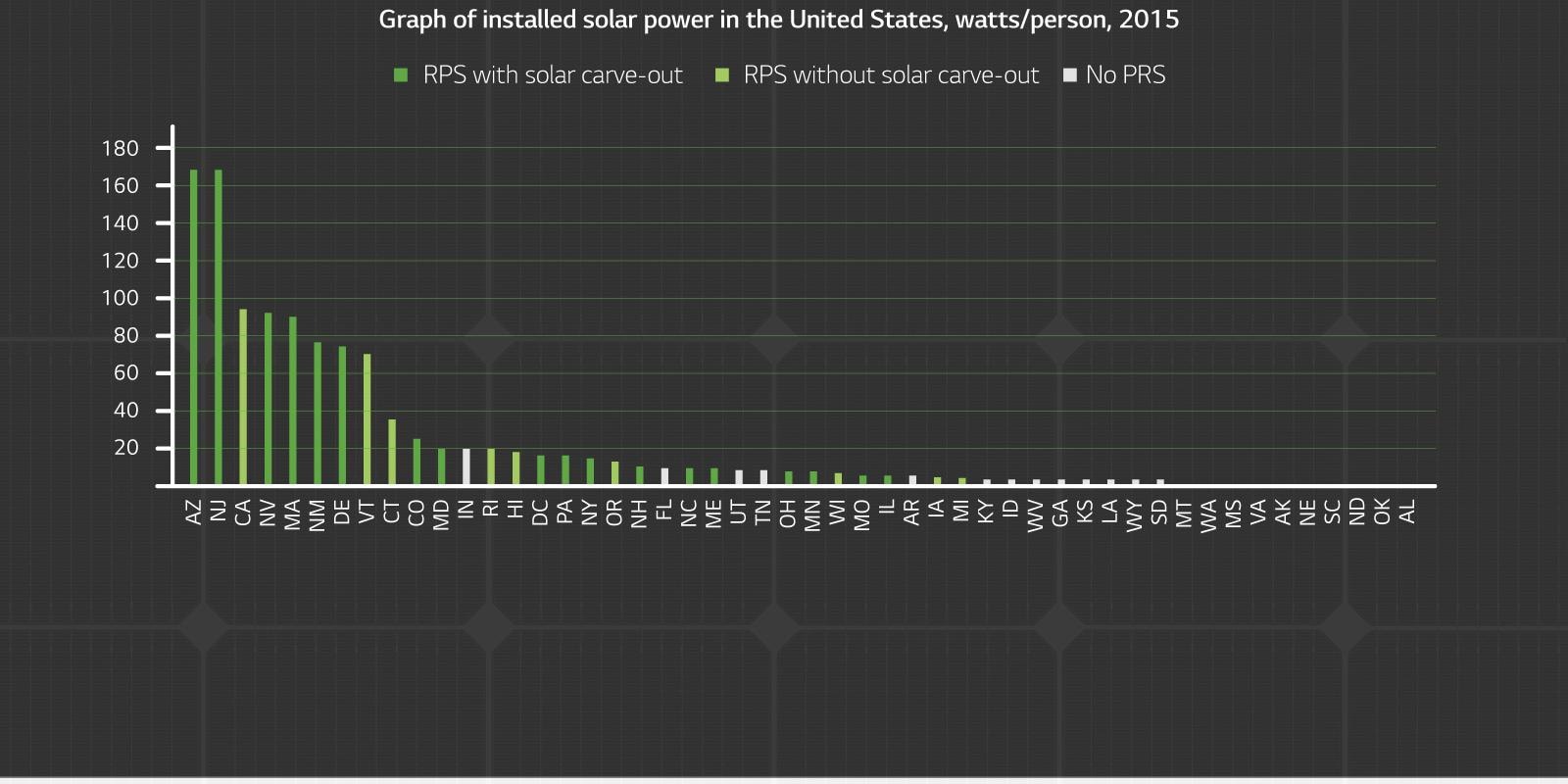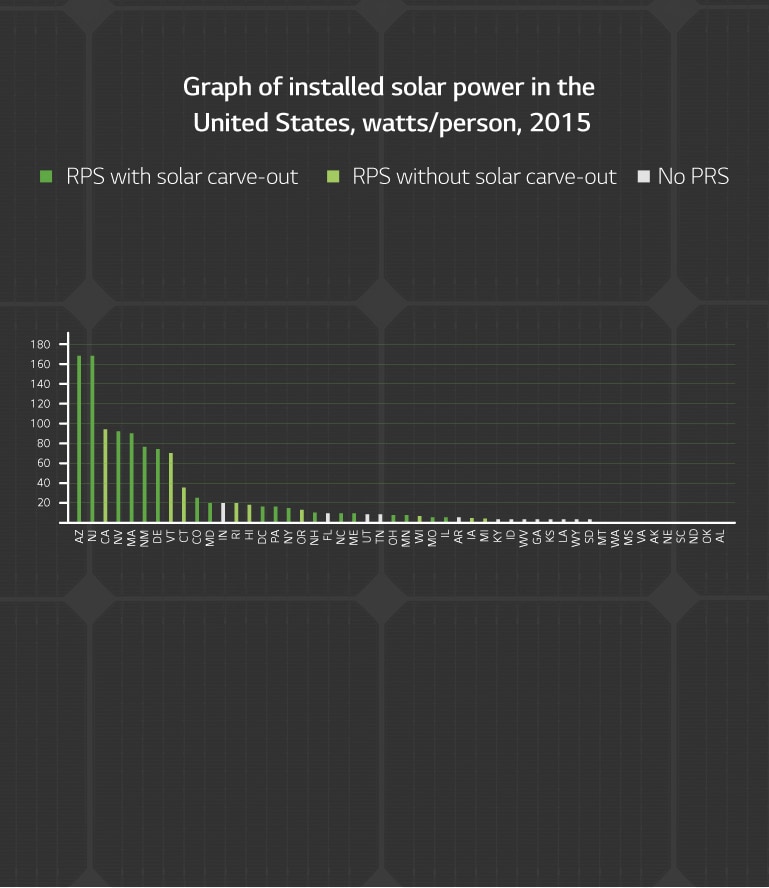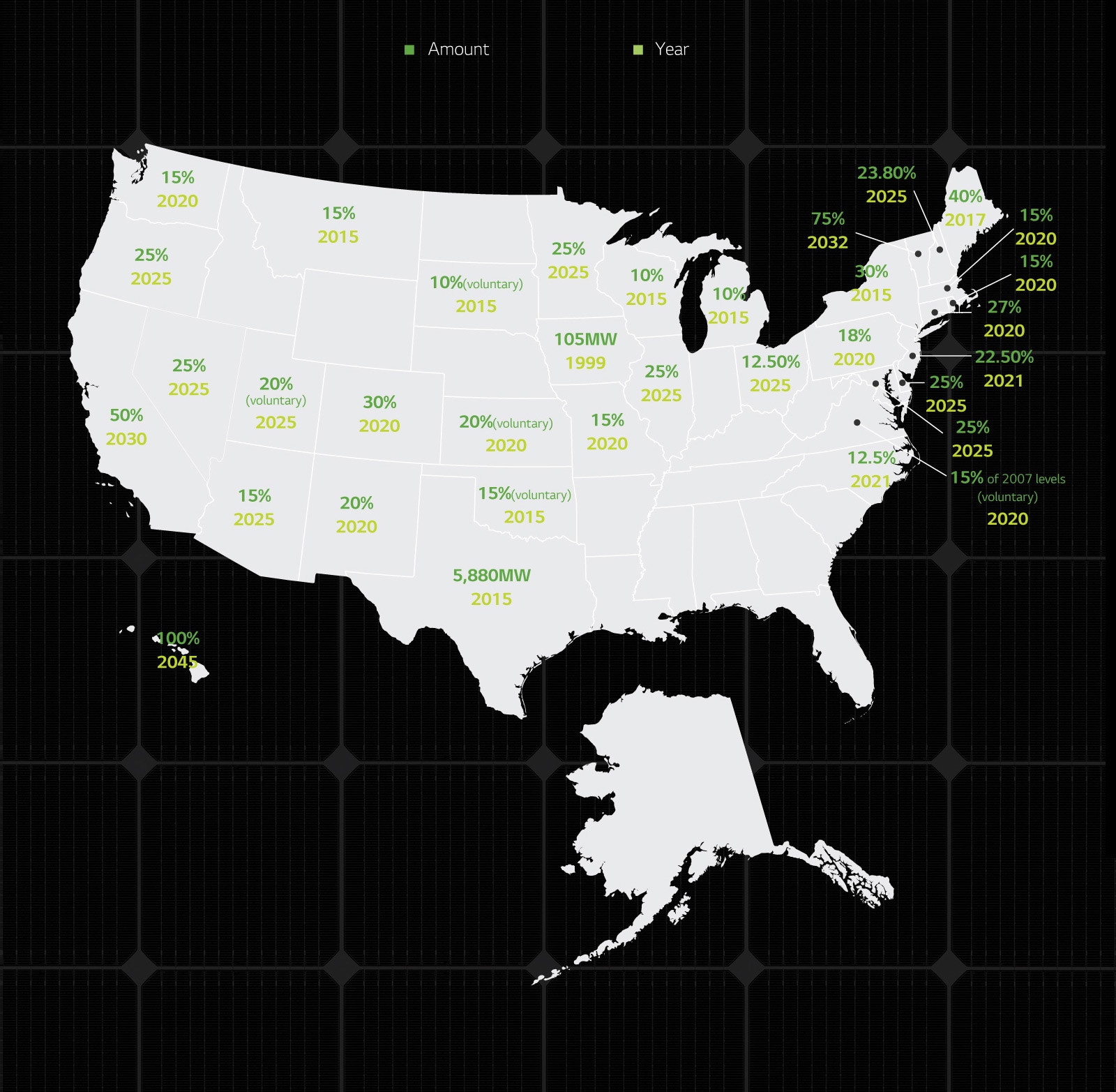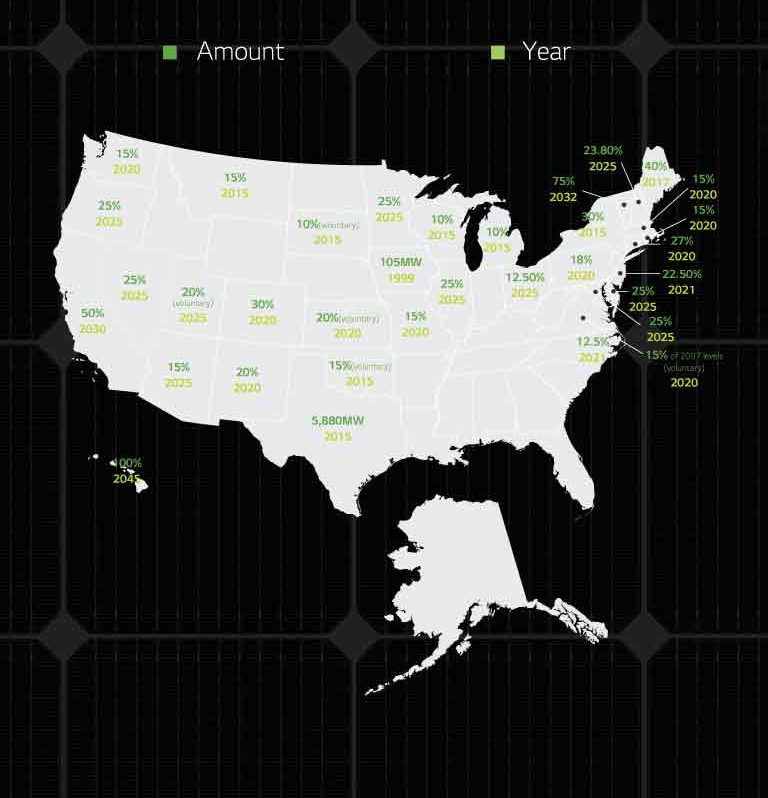What is a Renewable Portfolio Standard (RPS)?
Why are RPS laws important?
How RPS laws work:
Typically, a main goal is set for several years in the future, with interim goals for years in between. For example, California has a goal of 50 of retail energy sales by 2030, with increases of 5-8 every 4 years or so in between. As the goals are reached the state enforces compliance, which means they assess fees to the utilities that haven’t met the goals.
Eligible Technologies:
Each state gets to define the forms of electricity generation that qualify as “renewable.” Nearly all count solar, wind, and geothermal power generation, but other technologies may not qualify. Hydroelectric power, for example, is sometimes not included from a state’s RPS because of its relatively high impact on the environment, or sometimes simply because the power predates when the RPS was enacted.
Some states include specific goals for certain kinds of renewable generation, including solar. When this kind of technology-specific goal is mandatory, it is called a “carve-out” or “set-aside,” and it comes with its own set of rules.
One important term when it comes to eligibility is “distributed generation,” or “distributed energy resources,” which generally means small electrical generation systems spread around a utility service area. These resources include wind power turbines, solar panel systems, and small hydro generators, but can also come from non-renewable sources.
Renewable Incentives:
A major feature of RPS laws is the creation of incentives for renewable technologies. These incentives are basically subsidies, either from tax dollars within the state or from utility companies, which offer rebates to their customers as a way to encourage them to install solar panels or wind turbines and contribute to the overall RPS goal. The most popular types of incentives are rebates, tax credits, and Renewable Energy Credits
Rebates:
work just like a cash-back offer when you buy an appliance—you get money back from the utility company or the government when you buy a renewable system. But in the case of renewable systems, the rebate often goes to reducing the price you actually pay for the system, instead of coming back as a check after installation.
Tax credits:
on the other hand, give renewable system owners cash back in the year after they install the panels. Offers vary widely by state, but most generally allow for the owner to receive a credit equal to a certain percentage of the cost of their system. They often have caps on the amount an owner can receive, and also offer carryover of credit parts to the next year(s) if the owner can’t claim the whole amount in one year.
Renewable Energy Credits (RECs):
are a bit more complicated. A renewable energy system earns its owner one REC for each megawatt-hour (MWh) of electricity it generates. The REC serves as “proof of generation,” which can then be sold to a utility company to help it meet its goals under the RPS.
Unlike a rebate or tax credit, a REC is a way for system owners to earn additional money as their system produces electricity. The price of RECs varies widely across the country, from almost nothing to hundreds of dollars, and depends of several factors we cover in an article about RECs. This kind of market-based incentive can be offered for a limited time (e.g., the first 5 years of electricity production) or on an ongoing basis.
As we mentioned above, the cost of these subsidies is paid either with state funds or by utility companies, which are often allowed to recoup the cost of the incentives through small fees on all of their customers.
Ways in which RPS laws vary
The biggest variation between states is the renewable goal and timeframe for reaching it. For example, Michigan had a goal of 10 renewable energy by the end of 2015, while Hawaii has a goal of 100 renewable energy by 2045.
All state RPS laws
[RPS disc graph, showing the State Solar Power Ranking Report]
And below, we’ve included an alphabetical list of all the states with RPS laws, including those with voluntary goals instead of binding targets.



















